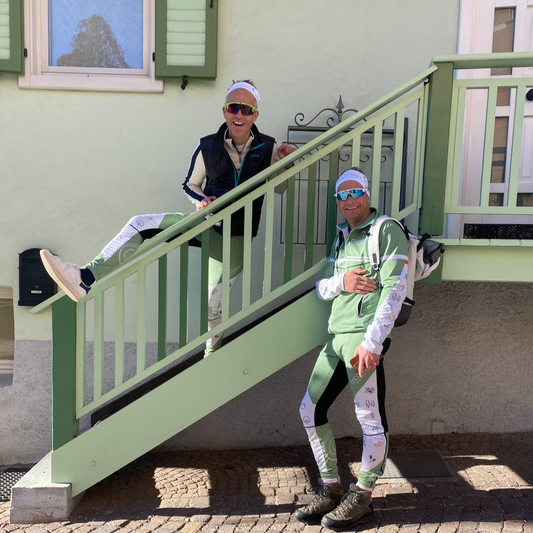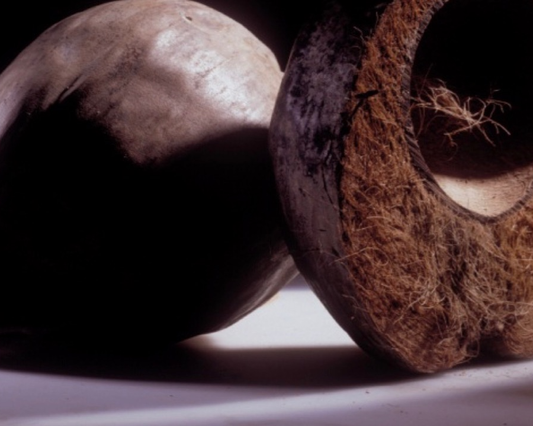HEARTS IN THE ICE
- 2 Women – Polar opposites
- 1 Trappers hut – No electricity
- 9 Months – 270 Days, 90 days of complete darkness
- 140km away from civilization
6 Citizen science projects. 1 mission
Hearts in the ice aims to create global dialogue and social engagement around the climate change in the Polar regions.
From August 2019 to May 2020 (9 months) seasoned expedition leaders Hilde Fålun Strøm and Sunniva Sorby will inhabit a historic 20-square meter trapper´s cabin known as “Bamsebu” (the bear hut) with as small a footprint as possible.
They are the first women ever to overwinter in Svalbard, where they will observe, record and broadcast extreme climate change events as they happen in High Arctic real time.
https://www.heartsintheice.com/

“Hearts in the ice” refers to two women who locate their livelihood and love of life in the polar regions of Svalbard and Antarctica. Their mutual concern for the future of ice and the welfare of the planet is what motivates their venture.
Coco-Mat is a proud sponsor of this expedition, providing the two explorers with our Atlas mattresses, duvets, pillows and linen for their overwintering.

Good sleep is vital to the explorer´s physical health during their stay. With Coco-Mat mattresses we will ensure that they will get good rest and feel empowered to handle the cold climate and harsh outdoor daily operations during their 9 months stay.
This is by far the most northern delivery made in Coco-Mat history. We are bringing our products closer to nature and contributing to less waste and footprint when in this sacred polar area.

Coco-Mat Norway, presented by Betina Sollie, has been personally involved in the launch of the expedition and delivered products herself to the Bamsebu cabin in September 2019. Please enjoy some pictures from the 3 day sail through the Arctic area, visiting glaciers, spectacular nature, glancing at polar bears and saying good bye to the two female explorers at Bamsebu.


Life at Bamsebu is broadcasted and published in real time via Iridium satellite through social media to scientist, students, adventurers and interested citizens around the world. They conduct live satellite calls with schools from North America and Europe twice monthly, to be posted on the blog and social media.

They are citizen scientists and conduct observations and gather data in collaboration with the Norwegian Polar institute, NASA and The Scripps Institution of Oceanography. Their findings will inform and update Arctic climate research. Two of these projects will be mirrored in Antarctica abroad Polar Latitudes´two expedition ships and monitored by Citizen Science Program: www.polar-latitudes.com
As this article is posted, the two explorers are still at Bamsebu. Due to Covid-19 the expedition was extended with no set date of return. They have come through the toughest part of a long winter with harsh weather conditions, extreme low temperatures, strong wind, complete darkness and several visits from their very looking friendly, but not so friendly neighbor “the Polar bear”.


Sleep has been a vital part of their overwintering. Managing the physical and mental challenges in the Arctic, is not possible if you are not well rested. Sleep is in fact what keeps your brain capable to face challenges and fears, and keeps you empowered to stay strong and focused.
Sunniva and Hilde have answered som Q & A´s on how sleep has impacted on their journey. Please enjoy the reading.
Q: How many hours of sleep do you get every night?
A: Approx. Midnight to 7am- 7 hours
Q: How important is sleep, to tackle your daily routines and challenges during your expedition?
A: Sleep is vital here. A good and proper night’s sleep is part of our foundation as strong committed, dedicated Climate Care Ambassadors. We have to be alert every day to handle the many physical demands and challenges of this remote existence so far away from anyone. The weather is extremely unpredictable and we are living in it every day so it matters to be ready to tackle any emergencies or mishaps. Our Hearts in the Ice platform is all about connection and collaboration and is demanding as we are observing wildlife, collecting samples, recording weather, aurora and different cloud patterns and we are engaging schools from around the world. Without proper sleep we would be so much less effective -we want to give our best so good sleep is key!
Q: Did you face any challenges with your circadian rhythms (the body´s internal clock for sleepiness) in the beginning of your expedition?
A: Not so much in the beginning but during the long Polar night yes it was very challenging to keep a steady rhythm as the lack of any natural light makes you quite sleepy and while you might like to “always” sleep when it is dark- we make sure that we keep a very steady rhythm and routine so we stay active during the day. We were always so tired from moving our bodies in different ways so it was not hard to sleep.
Q: Do you have any negative experiences with lack of sleep / poor sleep while at Bamsebu? If yes, in what way has this affected your decision making, risk taking, mood, hunger, fear or physical health?
A: There were several times when things kept us awake at night. We have no distraction here- no street noise, no voices other than our own.The times we could not sleep were related to strange dreams, the violent hurricane winds that shook the hut incessantly , the thoughts and images of the polar bear that visited us just outside the door, the aurora that we could not stop watching in the middle of the night. Your mind goes everywhere and you end up having a rather sleepless night. This impacts your mood- more prone to slight irritability and you feel more vulnerable and not as strong and on your “game” This can impact the whole day and is especially risky in this environment to not be “on your game” since severe things can happen in a split of a second. We are very aware of sleepless nights- once in a while it doesn't impact you that much but if you continue to not have solid sleep then your entire biorythym can be off making you more prone to stress, weight gain, mood swings etc. We have been so lucky here at Bamsebu. We have sheets, pillows, down comforters, wool comforters and mattresses that feel so clean, natural and comfortable. It is the best thing in the world to sleep on CoCoMat and have it wrapped around us here. We are living with nature 24/7 and so to have sleep gear that supports this very busy lifestyle makes us feel ready for anything, every single day.
Q: Do you have a consistent sleep routine while in Arctic, and why is this important?
A: A consistent sleep routine is like gold to us here and is as important as eating regular and healthy meals .All routines we have are part of the foundation we create that makes us stronger every day- sleep is one of those essential routines. We have both had the most peaceful, solid sleep since being here. The fact that we are remote and isolated means that there is a lot of work to stay alive here – the work is very physical. Being able to have a solid rest to allow the muscles and body to recover is necessaryand we can do that here with the mattresses and bedding we have. It is like heaven on earth!
Q: During your stay at Bamsebu, you have gotten used to living with a lot of darkness. Has this made any impact on your relation to the sunlight in terms of sleep?
A: Yes, we have had many months of 24 hour darkness and this is very different to live in. Typically when it gets dark at home we might wind down after the day and enter into a more natural mode of an evening where your energy slows down before you go to sleep.
During the dark days the 24 hour clock rolls into one dark long period. This lasts for months so we have to be very careful to keep a solid routine- stay active- train, eat at regular times, and sleep at regular times. This is the only thing that keeps you “sane” and helps to promote a healthy mind and spirit.
Q: The mattresses you have been sleeping on are made of natural materials which are degradable and does not emit any gases that are harmful to people or the environment. How important is your footprint while on this expedition?
A: One of the goals of our Hearts in the Ice- Climate Care project is sustainability innovation, alternative energy and a zero carbon footprint. It was important for us to align with partners and providers that shared our values. We were thrilled to learn the story of Coco-Mat, to know Betina and learn how you source and manufacture your sleep products.
It made it such that we were so looking forward to sleeping, for the first time in our 50 year old lives, on mattresses that were natural, biodegradable, comfortable, rejuvenating and safe! We have a zero-carbon footprint here at Bamsebu thanks to CHOOSE and we have not travelled anywhere for close to 200 days- our personal record. Yet without moving from this location we have been able to connect schoolchildren and citizens from around the world and to share with them why their choices matter in this climate change conversation.
THANK YOU - Sleep well, live better







1 kommentar
Hei
Mitt navn er Camilla Austad. Jeg jobber i Stinessen Arkitektur AS som arkitekt og interiørarkitekt. Dere kan se litt av hva vi driver med på https://www.snorrestinessen.com og Instagram https://www.instagram.com/snorre_stinessen/
Jeg kontakter dere i forbindelse med et hytteprosjekt vi for tiden jobber med i Lyngen i Nord-Norge. Dette vil være den første hytten av flere for high-end markedet i området.
Kunne det være interresant for Coco-Mat å være med på slike prosjekt?
Hører fra dere.
Med vennlig hilsen
Camilla Austad
Stinessen Arkitektur AS